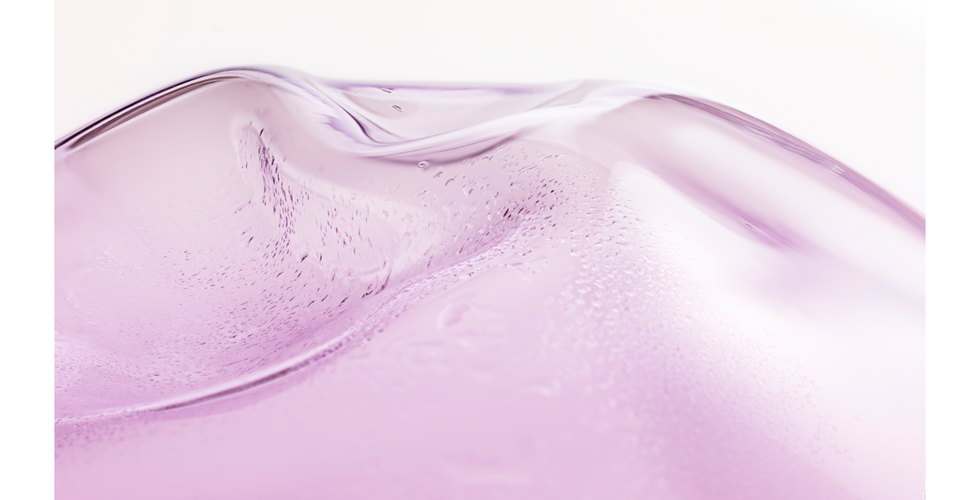Back in 2016, online magazine i-D partnered with Chanel to celebrate women in creative industries by commissioning projects inspired by the brand’s fragrances. A unique and unexpected fuse between fashion and technology, the partnership employed both leading and up-and-coming artists from various disciplines. Lucy Hardcastle was a relatively fresh textile design graduate of University of the Arts London when she was invited to take part. Her web-based project, titled “Intangible Matter,” focused on the abstract, intangible experience of smell. Hardcasle designed a collection of visual experiences with wormhole, dream-like engulfing qualities, that showcased a careful use of 3D animations, sounds and storytelling, presenting a refreshing interpretation of interactivity. The project gave depth and sensory richness to an primarily visual and 2D experience, and had a lasting impact on her career. On a personal note, she says, “It really felt like a stepping stone for how we have progressed in terms of how we interact, explore and express ourselves online”.
Fast forward a few years, and Hardcastle - who grew up in both South London and Norfolk to parents in the creative industry - established her own studio in London, where she now directs and designs interdisciplinary projects. Looking at her oeuvre, it’s clear she tends to deal with complex or abstract ideas that, with her help, turn into experience-based realities. Her work demonstrates sensory sensitivity and material proficiency that can be traced back to her childhood. As she tells, “I was always instinctively using my hands, for either drawing or playing with materials” and had an early fascination with the qualities of fabrics and their “movement, flexibility and potential”. Early sources of inspiration included technique and craftsmanship, which she found in artistic photo-realism traditional movements, like Pre-Raphaelite or Renaissance, but also in crafts like embroidery and woodwork. The connection to technology happened later on during her University years, where working with software helped her understand how “many possibilities there are once you incorporate the digital into the creative process.”
Creating conjunction points between craft and tech stems from her belief that “technology should be treated as any other artistic medium.” This stance comes from the cultural shift we’re facing, in which many sensory experiences are rendered through touching and viewing flat screens, and evident “ loss of physical and tactile knowledge and understanding,” as she describes. Understanding this forces an awareness towards the “many tools and opportunities within technological creativity to reverse this, as tech will always be a part of our lives.“
Holding a similar experimental approach towards her career, it seems that finding her forte wasn’t a linear process. When she graduated, she felt “hungry” for an opportunity to come her way, describing how “with each project I looked for ways that I could have some level of creative freedom to experiment with my practice, and make work that would be valuable for my portfolio, as I felt that time was my most valuable commodity.” She took on part-time, unrelated jobs so that she could put “the creative part of my brain into the work that was important to me.” Using the early stages of one’s career to explore, she says, make you more apt to “refine the niche you want to work within and create your own signature.”
The Mirage for 29Rooms
Speaking to the experimental aspects of navigating her career early on, Hardcastle stresses the importance of supporting others. Early on she interned at Franklintill Studio - a futures research agency - a place that both influenced her work and supported her later on, as the studio included her work in their trend reports published by Viewpoint Magazine and Computer Arts Magazine. Seetal Solanki of Ma-tt-er, who she describes as “an amazing thinker and a particularly great example of incorporating material exploration into a design practice”, is another supporter of hers. Now, as the founder of a female-lead studio, she ensures her work “considers the importance of inclusivity through design and equal accessibility, particularly in terms of pieces that are public facing.” Speaking on her own responsibility as a creative, she feels that “each generation of creative women opened the doors for future generations, and this generation shouldn’t be any different. I feel best in places where I can thrive and be supported, rather than trying to fit into a space that may not be right for me. Creativity can definitely shape people's views and opinions, and it's our responsibility to ensure the creative community is as open-minded and diverse as possible.”
Recently, Hardcastle worked on two major projects: “The Mirage” for 29Rooms and Kalostasis for King’s College London. Both projects involve user-lead experiences and different types of interactive tech, such as real-time rendering and AR. What interests her in both is “to uncover stories that are unseen, or only exist in our imaginations, and [communicate them] through non-traditional mediums.” Her current focus is on self-initiated projects, as well as AR-based commissions.

Regarding the COVID-19 pandemic, Hardcastle views the current climate lockdown as “an opportunity to spend additional time researching and thinking at the initial stages of these projects, which I’m very grateful for.”
She is excited about the idea of further collaborating with scientific and technical fields, and about finding new ways to communicate the depth and complexities of research. Looking back, if we were to measure the conceptual distance between the time of Intangible Matter and now, we’d notice how different creative technologies and digital artists are perceived. At the time, “it was really unusual for that type of brand to commission an ‘online experience’” she shares, “whereas now, it's seen as a much more tangible way to communicate with your audience”, offering a limitless field of aesthetics and play.
FLUO for Xintiandi Plaza















